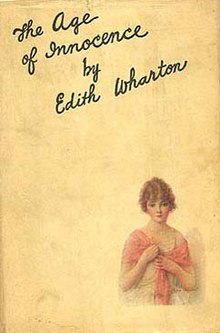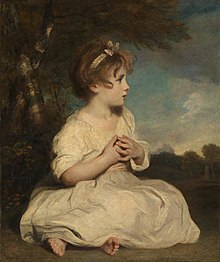
Edith Wharton was an American writer and designer. Wharton drew upon her insider's knowledge of the upper-class New York "aristocracy" to portray realistically the lives and morals of the Gilded Age. In 1921, she became the first woman to win the Pulitzer Prize in Fiction, for her novel The Age of Innocence. She was inducted into the National Women's Hall of Fame in 1996. Among her other well known works are The House of Mirth, the novella Ethan Frome, and several notable ghost stories.
Keeping up with the Joneses is an idiom in many parts of the English-speaking world referring to the comparison to one's neighbor as a benchmark for social class or the accumulation of material goods. To fail to "keep up with the Joneses" is perceived as demonstrating socio-economic or cultural inferiority. The phrase was coined by a 1910s comic strip of the same name.

The House of Mirth is a 1905 novel by American author Edith Wharton. It tells the story of Lily Bart, a well-born but impoverished woman belonging to New York City's high society around the end of the 19th century. The House of Mirth traces Lily's slow two-year social descent from privilege to a lonely existence on the margins of society. In the words of one scholar, Wharton uses Lily as an attack on "an irresponsible, grasping and morally corrupt upper class."

The Buccaneers is the last novel written by Edith Wharton. The story is set in the 1870s, around the time Wharton was a young girl. It was unfinished at the time of her death in 1937 and published in that form in 1938. Wharton's manuscript ends with Lizzy inviting Nan to a house party, to which Guy Thwaite has also been invited. The book was published in 1938 by Penguin Books in New York. After some time, Marion Mainwaring finished the novel, following Wharton's detailed outline, in 1993.
"Roman Fever" is a short story by American writer Edith Wharton. It was first published in Liberty magazine on November 10, 1934. A revised and expanded version of the story was published in Wharton's 1936 short story collection The World Over.

The Omni Parker House is a historic hotel in Boston, Massachusetts, founded in 1855. The current hotel structure dates to 1927. Located at the corner of School Street and Tremont, not far from the seat of the Massachusetts state government, the hotel has long been a rendezvous for politicians. The Omni Parker House is a member of Historic Hotels of America, the official program of the National Trust for Historic Preservation.
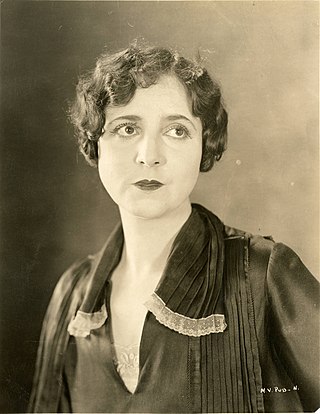
Beverly Bayne was an American actress who appeared in silent films beginning in 1910 in Chicago, Illinois, where she worked for Essanay Studios.
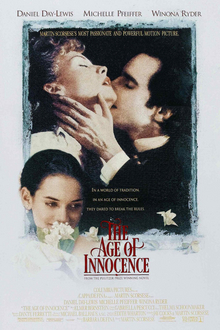
The Age of Innocence is a 1993 American historical romantic drama film directed by Martin Scorsese. The screenplay, an adaptation of the 1920 novel of the same name by Edith Wharton, was written by Scorsese and Jay Cocks. The film stars Daniel Day-Lewis, Michelle Pfeiffer, Winona Ryder and Miriam Margolyes, and was released by Columbia Pictures. The film recounts the courtship and marriage of Newland Archer (Day-Lewis), a wealthy New York society attorney, to May Welland (Ryder); Archer then encounters and legally represents Countess Olenska (Pfeiffer) prior to unexpected romantic entanglements.

The Shaughraun is a melodramatic play written by Irish playwright Dion Boucicault. It was first performed at Wallack's Theatre, New York, on 14 November 1874. Dion Boucicault played Conn in the original production. The play was a huge success, making half a million dollars for Boucicault.

The Custom of the Country is a 1913 tragicomedy of manners novel by the American author Edith Wharton. It tells the story of Undine Spragg, a Midwestern girl who attempts to ascend in New York City society.

Henry Symes Lehr was an American socialite during the Gilded Age who was dubbed "America's Court Jester".

The Old Maid is a 1934 play by American playwright Zoë Akins, adapted from Edith Wharton's 1924 novella of the same name. The play as published has six "episodes", covering twenty-one years of time. It has a large cast, and three settings; one is used for the last four episodes (scenes). The story concerns two women, cousins, who allow rancor over a lost love to become a struggle for the illegitimate daughter of one.

The Reef is a 1912 novel by American writer Edith Wharton. It was published by D. Appleton & Company. It concerns a romance between a widow and her former lover. The novel takes place in Paris and rural France, but primarily features American characters. While writing the novel, Edith Wharton visited England, Sicily, and Germany, among other locations. In a letter to Bernard Berenson in November 1912, Wharton expressed regret regarding her novel, calling it a “poor miserable lifeless lump”. She wrote, “Anyhow, remember it’s not me, though I thought it was when I was writing it—& that next time I’m going to do something worthwhile!!”

The Age of Innocence is a 1934 American drama film directed by Philip Moeller and starring Irene Dunne, John Boles and Lionel Atwill. The film is an adaptation of the 1920 novel The Age of Innocence by Edith Wharton, set in the fashionable New York society of the 1870s. Prolific on Broadway, Philip Moeller directed only two films: this, and the 1935 Break of Hearts with Katharine Hepburn.
Old New York (1924) is a collection of four novellas by Edith Wharton, revolving around upper-class New York City society in the 1840s, 1850s, 1860s, and 1870s.

The Age of Innocence is a 1924 American silent film directed by Wesley Ruggles. It is the first film adaptation of Edith Wharton's 1920 novel The Age of Innocence. It was produced and distributed by Warner Brothers.
"The Muse’s Tragedy" is a short-story written by Edith Wharton. Published in 1899 by Charles Scribner’s Sons, The Muse’s Tragedy was then printed in June 1899, as part of the collection of short fiction The Greater Inclination.

Mary Cadwalader Rawle Jones was an American author, socialite, and social leader during the Gilded Age.
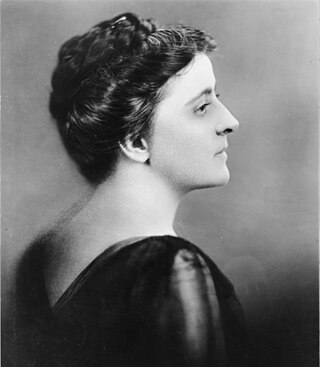
Helen Woodrow Bones was Woodrow Wilson's first cousin and also, from her childhood, a friend of Wilson's first wife, Ellen. Bones moved to the White House as Ellen Wilson's private secretary after Wilson's 1912 election as US President. After Ellen Wilson's death in 1914, Bones served as a "surrogate First Lady" in the Wilson White House until his second marriage sixteen months later.
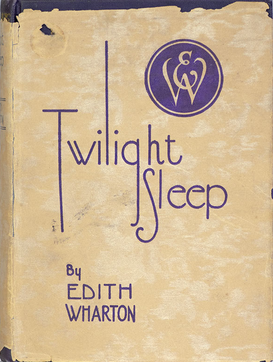
Twilight Sleep is a novel by American author Edith Wharton and was first published in 1927 as a serial in the Pictorial Review before being published as a novel in the same year. The story, filled with irony, is centered around a socialite family navigating the New York of the Jazz Age and their relationships. This novel landed at number one on the best-selling list just two months after its publication and finished the year at number 7. Even as a best selling novel Twilight Sleep was not well received by critics at the time, who, while appreciating Wharton as a writer, struggled with the scenarios and characters she had created in the novel. While it was not considered as such in its own time period, today Twilight Sleep is widely considered to be a modernist novel as it employs modernist literary devices, such as an ever changing narration among the novel's characters and a close examination of the characters' self-identities and relationships with one another.
